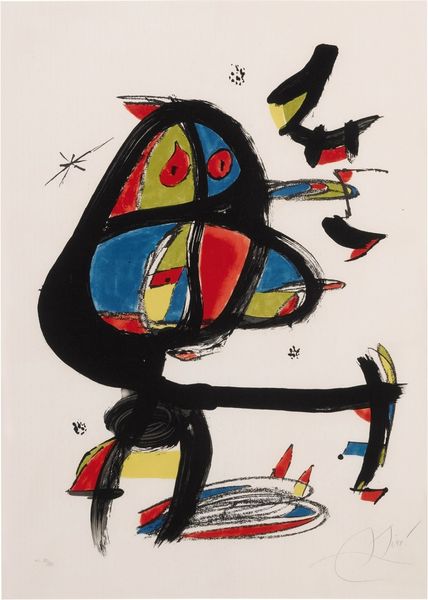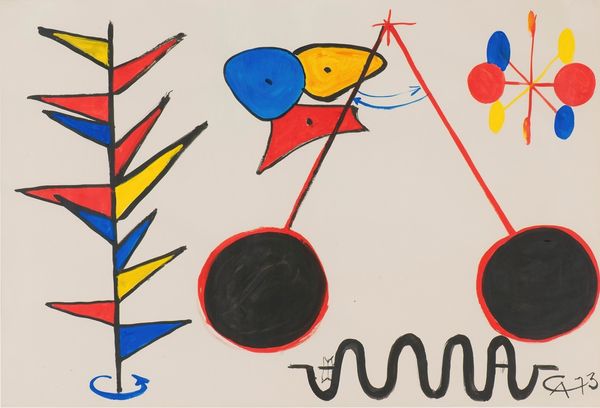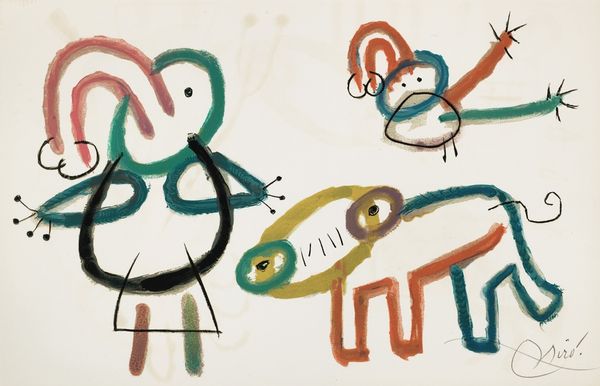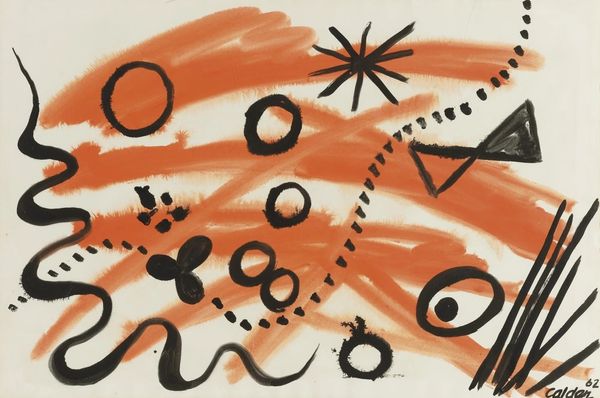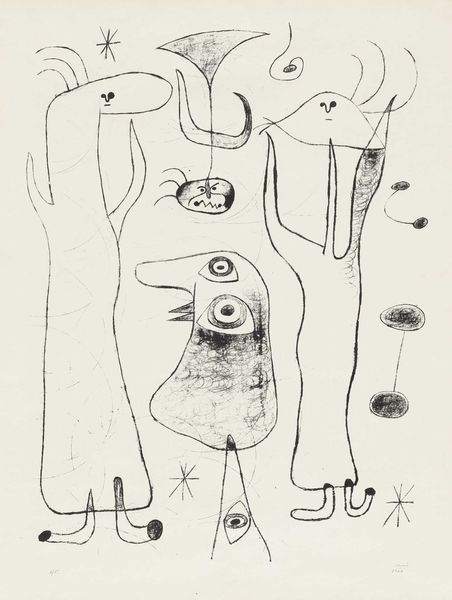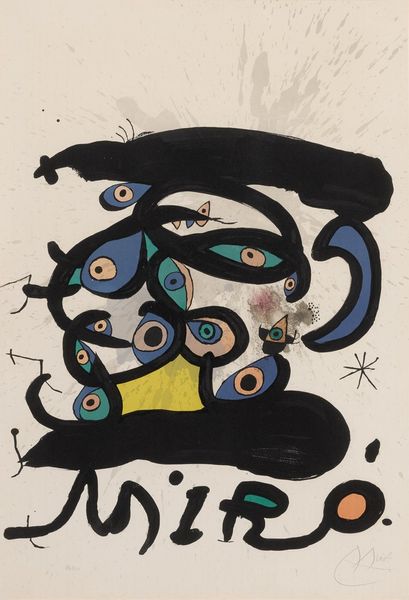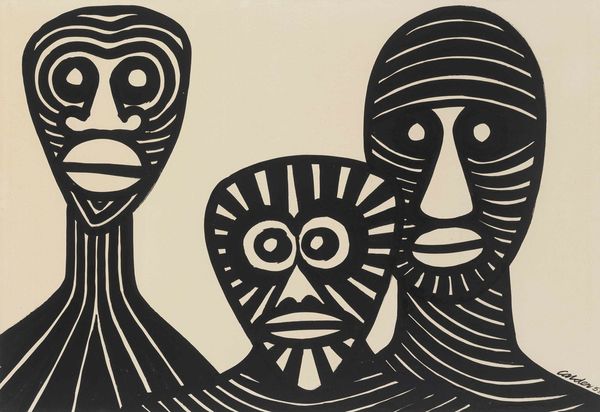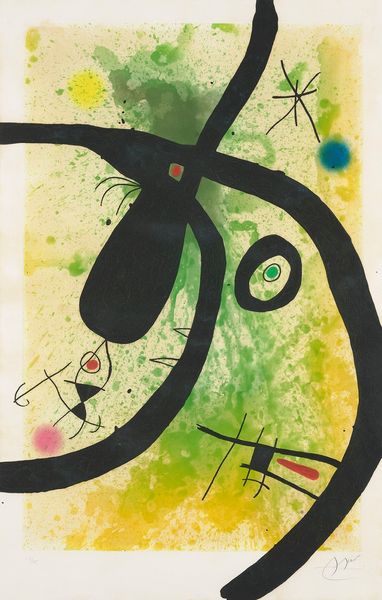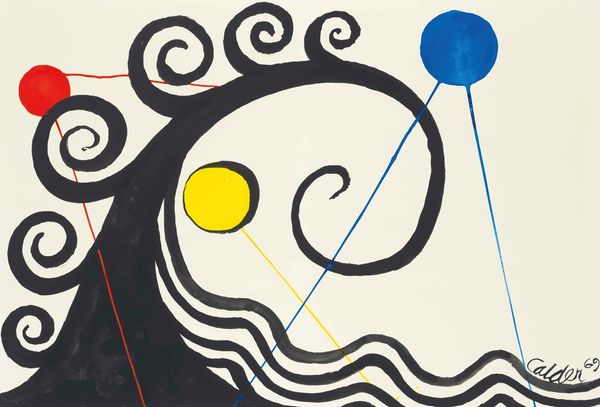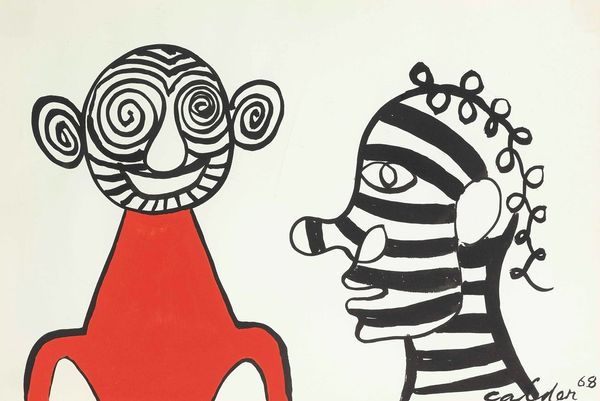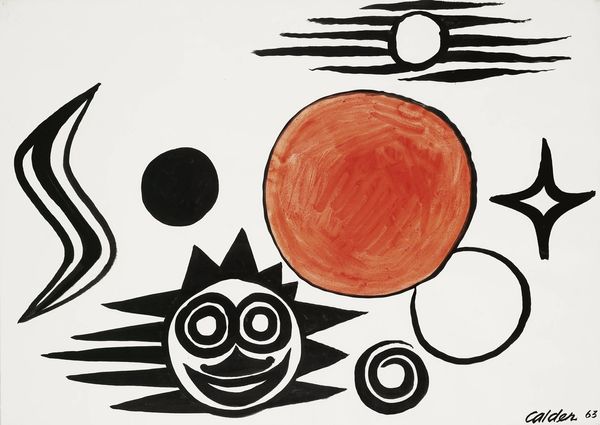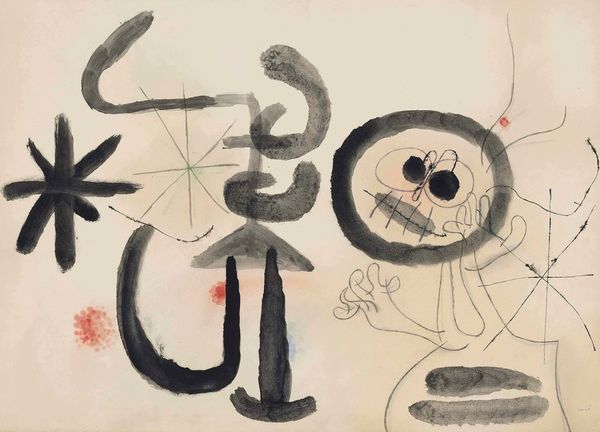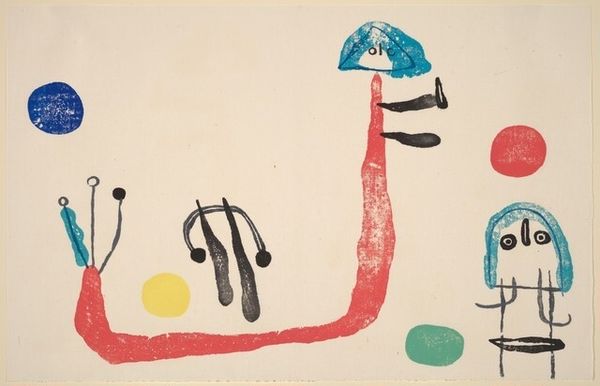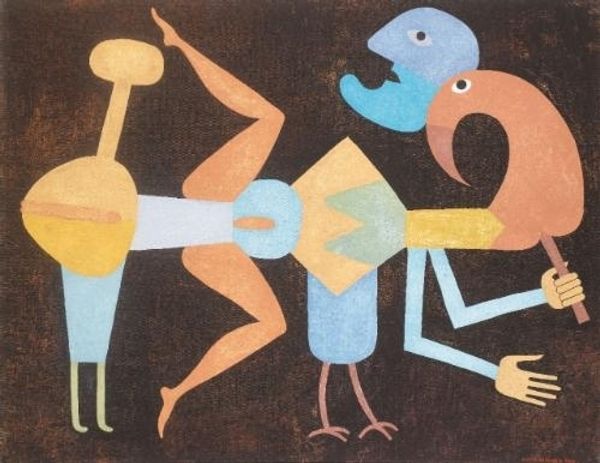
drawing, paper, ink
#
drawing
#
figuration
#
paper
#
abstract
#
ink
#
line
#
surrealism
#
modernism
Copyright: Modern Artists: Artvee
Curator: This drawing, "Dessin pour Ubu Roi", was created by Joan Miró around 1953. He worked primarily in ink on paper for this series. What are your initial thoughts? Editor: Stark. Almost menacing. The bold black lines give the figures a crude, unsettling presence. It feels like a theatrical stage set, or perhaps a political cartoon stripped down to its most essential elements. Curator: Indeed, these works were preparations for a planned illustrated edition of Alfred Jarry's play *Ubu Roi*, a scathing satire on power and political absurdity. This particular image speaks to that—Miró uses deceptively simple lines and forms, but creates something that visually punches you. Editor: Absolutely. Knowing the Ubu Roi context, these figures become even more potent. They reflect the play's critique of authoritarianism. I find myself wondering if Miró intentionally designed them to be vaguely dehumanizing, mirroring Ubu's own grotesque character. The small spots of color amid the dominating black only accentuate the darkness. Curator: Well, Jarry's play itself had a seismic impact on the art world, inspiring avant-garde movements like Dada and Surrealism. Considering Miró's affiliation with Surrealism, it’s interesting how he returns to the source material, reimagining it during a post-war era grappling with its own political turmoil and a rise of different power structures. Editor: Precisely. And the minimalist aesthetic really intensifies the socio-political critique, I believe. The absence of detail allows viewers to project their own anxieties onto these figures, and they transcend a specific time or place. That makes this work frighteningly relevant today. This makes you think about representation, doesn’t it? Whose image gets put forward, and why? What do these figures represent politically and culturally, and for whom? Curator: Those are precisely the kinds of conversations I believe are so important to have within our current socio-political atmosphere. Thinking of artistic intention in context of a historical framework always informs present-day challenges and expectations. Editor: It truly illuminates the complex relationships between art, power, and social responsibility. I appreciate the clarity, directness, and relevance of the drawing itself.
Comments
No comments
Be the first to comment and join the conversation on the ultimate creative platform.
